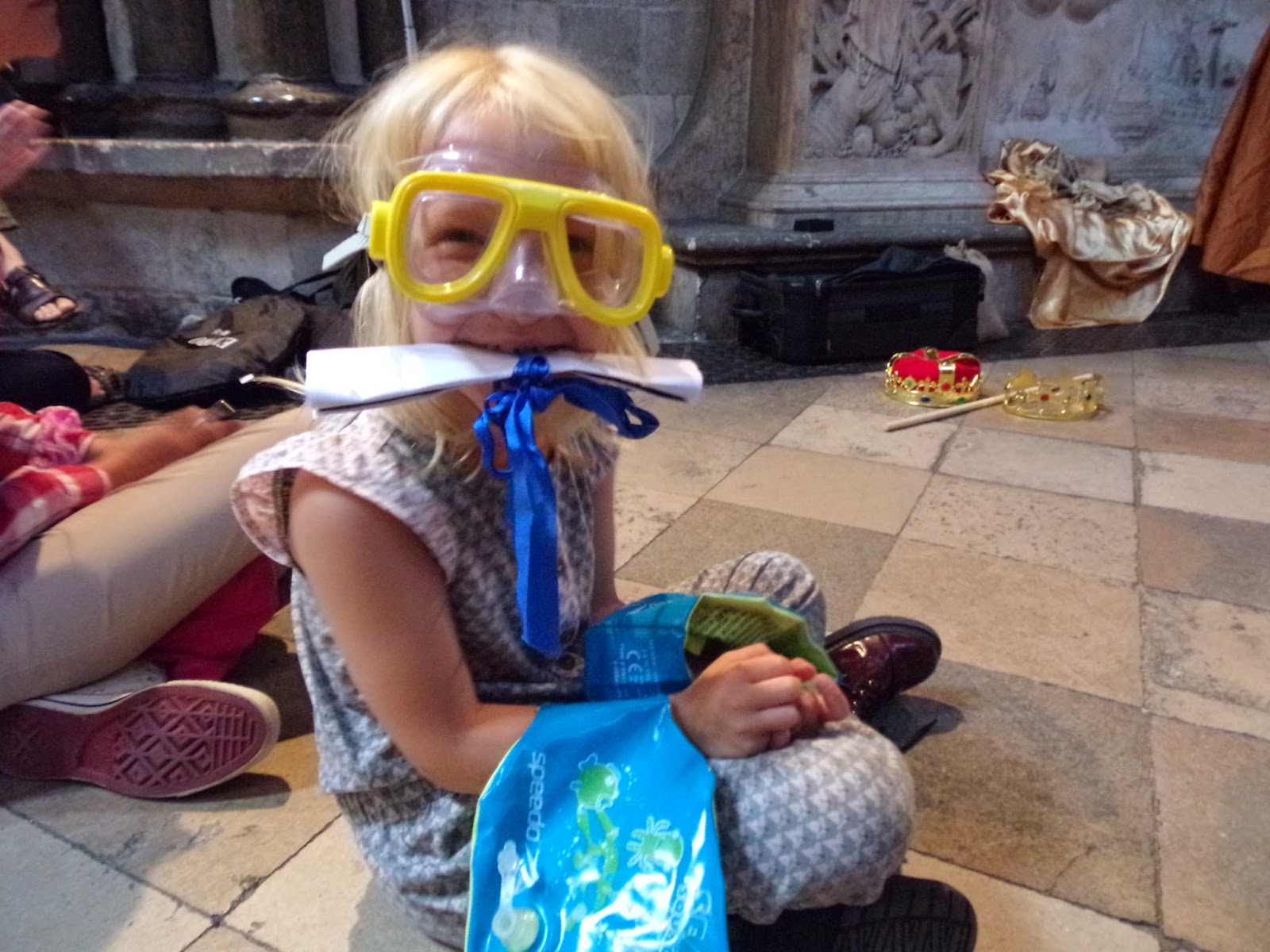Lotte was asked to play the role of a young Sir Cloudesley Shovell, he was fighting against the Dutch and the ship he was on had lost its mast, the admiral of the ship called Sir Christopher Myngs asked for someone to volunteer to take a message for help.
Millie said; "I like Lady Shovell she got us to act out the story and made it interesting instead of just talking, I felt a lot more involved."
Harrison explained why pendulums were so inaccurate in his day, the metal used expanded and contracted depending on the temperature. We asked Millie what she had learnt about how this affected the accuracy of clocks at this time. Millie said; "When the pendulum was shorter it went quicker, when it was longer it went slower." Harrison went on to explain how he solved this problem. He used a pendulum made of brass and steel so that when one metal contracted the other expanded so they balanced each other out. This was called a bimetallic strip.
Mr. Harrison explained to the children that the world is divided up into twenty four sections which are called meridians. He told us there are 360 degrees in a circle, so if there are twenty four segments it would mean that each segment must represent fifteen degrees. Well before Harrison's time sailors would only ever travel close to shore, as soon as they started to travel long distances such as America the problems began. We asked Millie what these were. She told us that as there was nothing out at sea to look out for like landmarks navigating became very hard for the sailors.
The children were told that Harrison made five clocks; he showed them a picture of his first clock. He made his first clock and came down to Greenwich to meet Edmund Halley who was the Astronomer Royal. Halley introduced Harrison to the clockmaker George Graham who helped him refine his first clock H1. In the morning the children saw George Graham's grave which is right beside Harrison's memorial.
They filmed Isaac Newton's memorial as well - Isaac was on the board of Longitude, he was one of the people who would decide who would win the £20,000 prize. He believed that it was impossible to create a clock accurate enough to find Longitude and that the winning solution would be an astronomical one.
 |
| The man who solved the problem of Longitude: John Harrison |









No comments:
Post a Comment